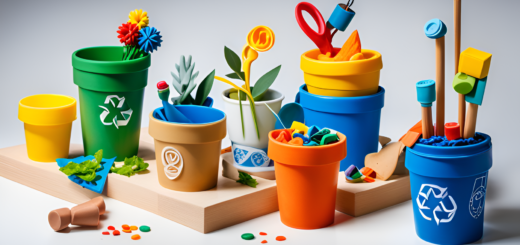Creating a Sustainable Future: Waste Reduction Strategies for Australia

The State of Waste in Australia
The current state of waste in Australia can be described as a pressing concern. The waste management system in place is a complex network of local council services, private businesses, and government regulations. While it has seen considerable improvements over the years, challenges still abound. According to the ABC report on The State of Waste in Australia, Australians generated over 76 million tonnes of waste in a single year. That’s a staggering amount, considering our relatively small population.
The impact of this waste production is immense, not only on our environment but also on public health. It’s not just about unsightly landfills or marine debris affecting our wildlife. The improper disposal of hazardous materials can contaminate water sources, soil, and even the air we breathe, posing serious health risks. As mentioned earlier, this is an issue that needs our immediate attention.
Reduce, Reuse, Recycle: The 3 R’s of Waste Reduction
To combat this growing problem, we need to start at the source: our waste production habits. The 3 R’s of waste reduction – Reduce, Reuse, and Recycle – play a crucial role here. The NSW Environment Protection Authority outlines how these simple actions can significantly reduce the amount of waste we generate.
Strategies for reducing waste include everything from choosing products with less packaging to composting organic waste at home. When we can’t reduce, we should look to reuse items as much as possible. And if we can’t reuse, we should recycle. These actions are not just for individuals but also for businesses, which can make a significant difference by implementing sustainable practices.
Innovative Waste Reduction Strategies
While the 3 R’s are fundamental, they’re just the start. With emerging technologies, we can look towards more innovative waste reduction strategies. For instance, composting and organic waste management have become increasingly popular. Organic waste, when managed properly, can be converted into nutrient-rich compost, contributing to sustainable agriculture in Australia.
Another promising approach is the adoption of a circular economy, a concept where waste is minimised by keeping resources in use for as long as possible. The circular economy in Australia is gaining traction, offering a sustainable and efficient way to manage waste. For more on these innovative strategies, the article on innovative waste reduction strategies provides an in-depth look.
Government Policies and Waste Reduction
It’s not just up to individuals and businesses to fight the waste problem, though. Government policies also play a crucial role in waste reduction. They set the rules and regulations that guide our waste management practices, and ideally, encourage waste reduction at all levels of society.
Currently, Australia has a number of waste reduction policies in place. These include landfill levies to discourage waste disposal, extended producer responsibility schemes, and grants for waste reduction initiatives. However, while these policies have seen some success, there’s always room for improvement. A more proactive approach towards waste reduction can go a long way in changing our waste landscape.
For instance, stronger regulations on product design and manufacturing could be implemented, requiring companies to minimise waste and maximise recyclability. Greater transparency in waste management practices could also be enforced, holding businesses accountable for their waste. Of course, the effectiveness of these policies would largely depend on how well they are enforced and how well the public complies with them.
Case Studies: Successful Waste Reduction Programs in Australia
Despite the challenges, there are several shining examples of successful waste reduction in Australia. The City of Sydney’s Zero Waste Strategy is one such case. This ambitious plan aims to divert 90% of waste from landfill by 2030, focusing on strategies such as waste avoidance, resource recovery, and recycling. If successful, it could serve as a blueprint for other cities in their waste reduction efforts.
Another example is the Plastic Free July campaign, a global movement that encourages people to reduce their plastic waste. Originating in Australia, this initiative has seen millions of participants worldwide, demonstrating the power of collective action in tackling waste.
Lastly, the Australian Packaging Covenant is an initiative that brings together businesses, government, and industry to reduce the environmental impact of packaging. Its success is evident in its comprehensive approach to waste reduction, which includes everything from design and production to consumption and disposal.
The Future of Waste Reduction in Australia
Looking ahead, the future of waste reduction in Australia holds much potential. A zero-waste future, where all resources are reused or recycled, is within our grasp. To achieve this, we’ll need to continue innovating, adopting new technologies, and refining our waste management practices. As we’ve discussed earlier, the role of technology and innovation in waste reduction is becoming increasingly important.
For example, advancements in recycling technologies can improve the efficiency and effectiveness of recycling processes. Innovations in product design can also reduce waste by designing products to be more durable, reusable, and recyclable.
But it’s not just about technology. Individual and collective action will be vital in achieving a sustainable future. This means adopting sustainable habits, like reducing our consumption, reusing items, and recycling waste. It also means advocating for better waste policies and supporting businesses that prioritise sustainability. As we’ve seen in the case of Australia’s efforts in climate change adaptation, every bit counts.
Moreover, a sustainable future will require us to rethink our entire approach to waste. We need to see waste not as a problem to be disposed of, but as a resource to be valued. This is the essence of a circular economy, an approach that is becoming increasingly relevant in our efforts towards waste reduction.
As part of this shift, we should also explore more opportunities for collaboration. Governments, businesses, and individuals all have unique roles to play in waste reduction, and by working together, we can achieve much more than by working in silos. This is evident in the successes of collaborative initiatives like the Australian Packaging Covenant.
While the road ahead may be challenging, the potential benefits are immense. Not only can we reduce the environmental impact of waste, but we can also create a more sustainable and resilient economy. The key is to start now, and to keep pushing forward, no matter the obstacles.
Conclusion
As we’ve seen, waste reduction is a complex issue that requires a multifaceted approach. It’s about more than just recycling; it’s about reducing waste at the source, reusing resources, and rethinking our entire approach to waste. It’s about government policies that encourage sustainable practices, businesses that prioritise sustainability, and individuals who make conscious choices to reduce their waste. And above all, it’s about recognising the value of our resources and working together to create a sustainable future.
In this journey, every action counts. Every item we choose not to buy, every piece of waste we divert from landfill, and every product we design to be reusable or recyclable makes a difference. So let’s keep the conversation going, and let’s keep pushing for a more sustainable Australia.
As we move towards a more sustainable future, we’ll continue to explore these issues and more on our blog. For more on sustainability in Australia, check out our articles on sustainable agriculture in Australia, Australia’s efforts in climate change adaptation, and the circular economy in Australia.



